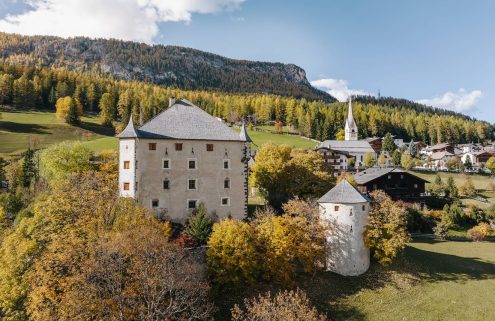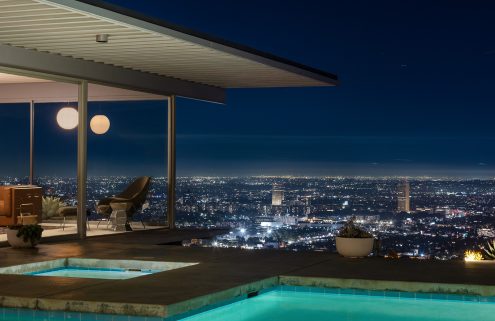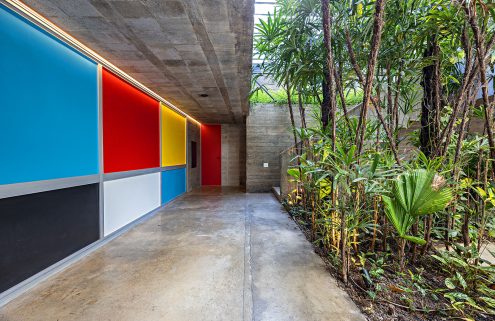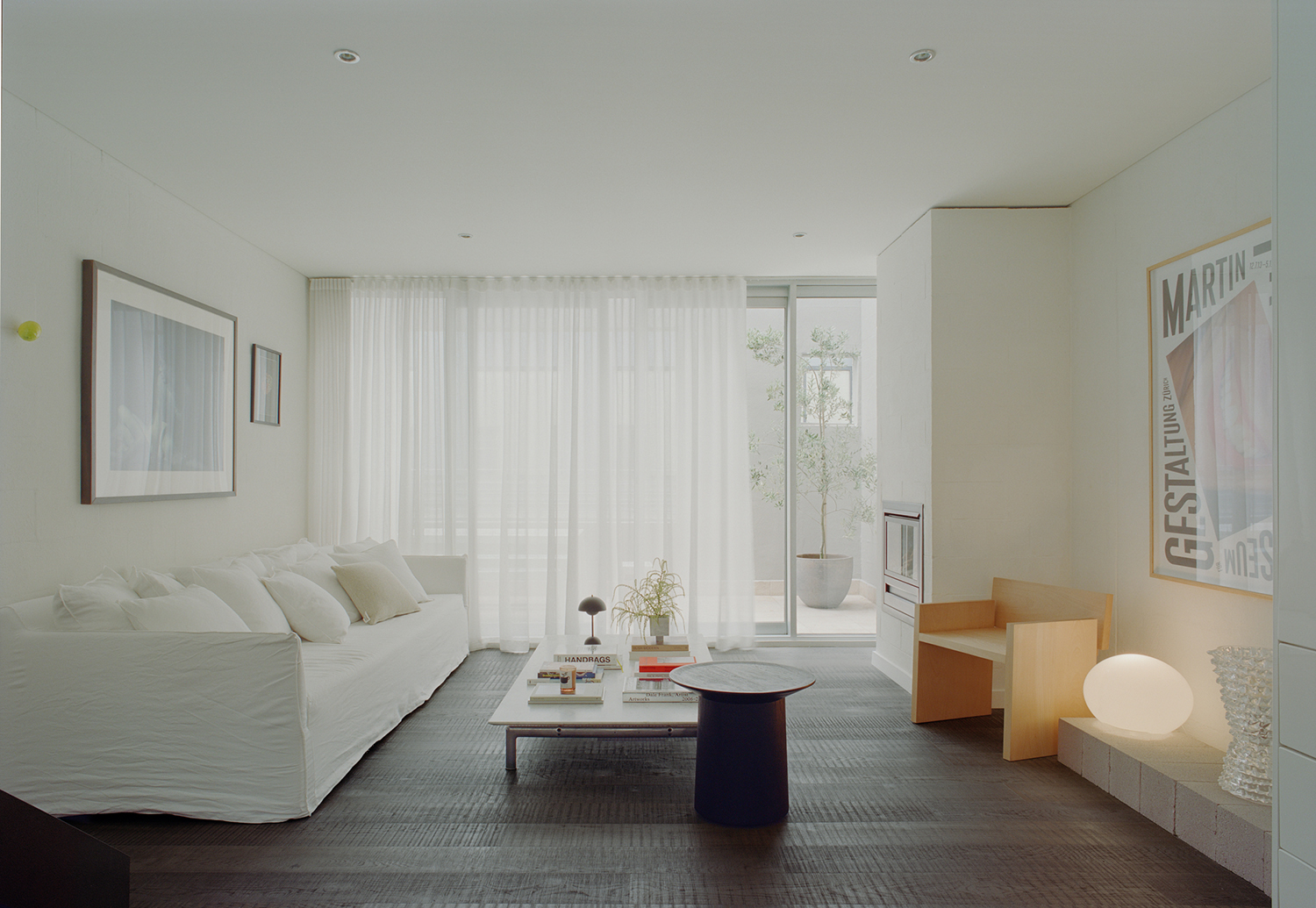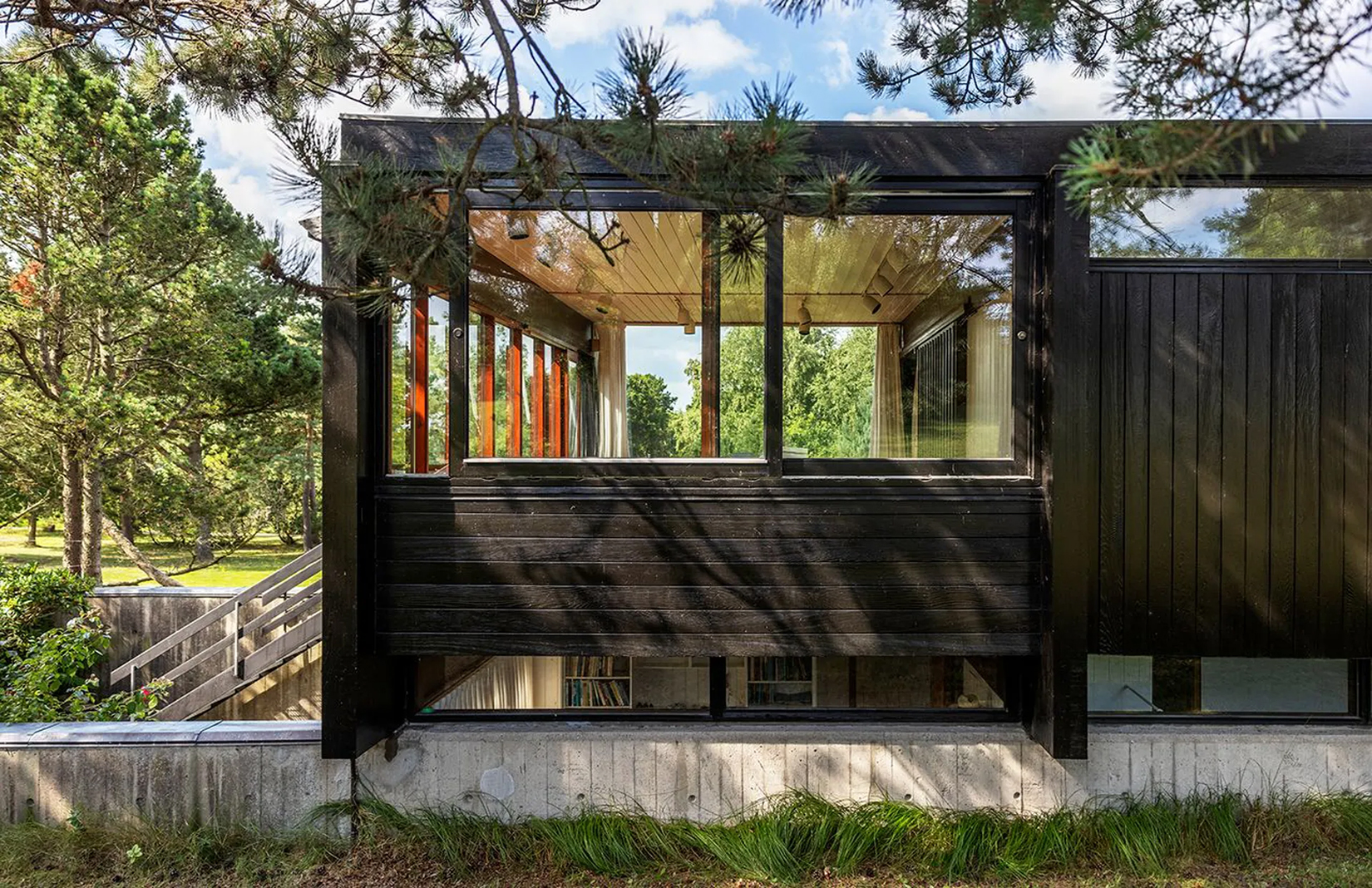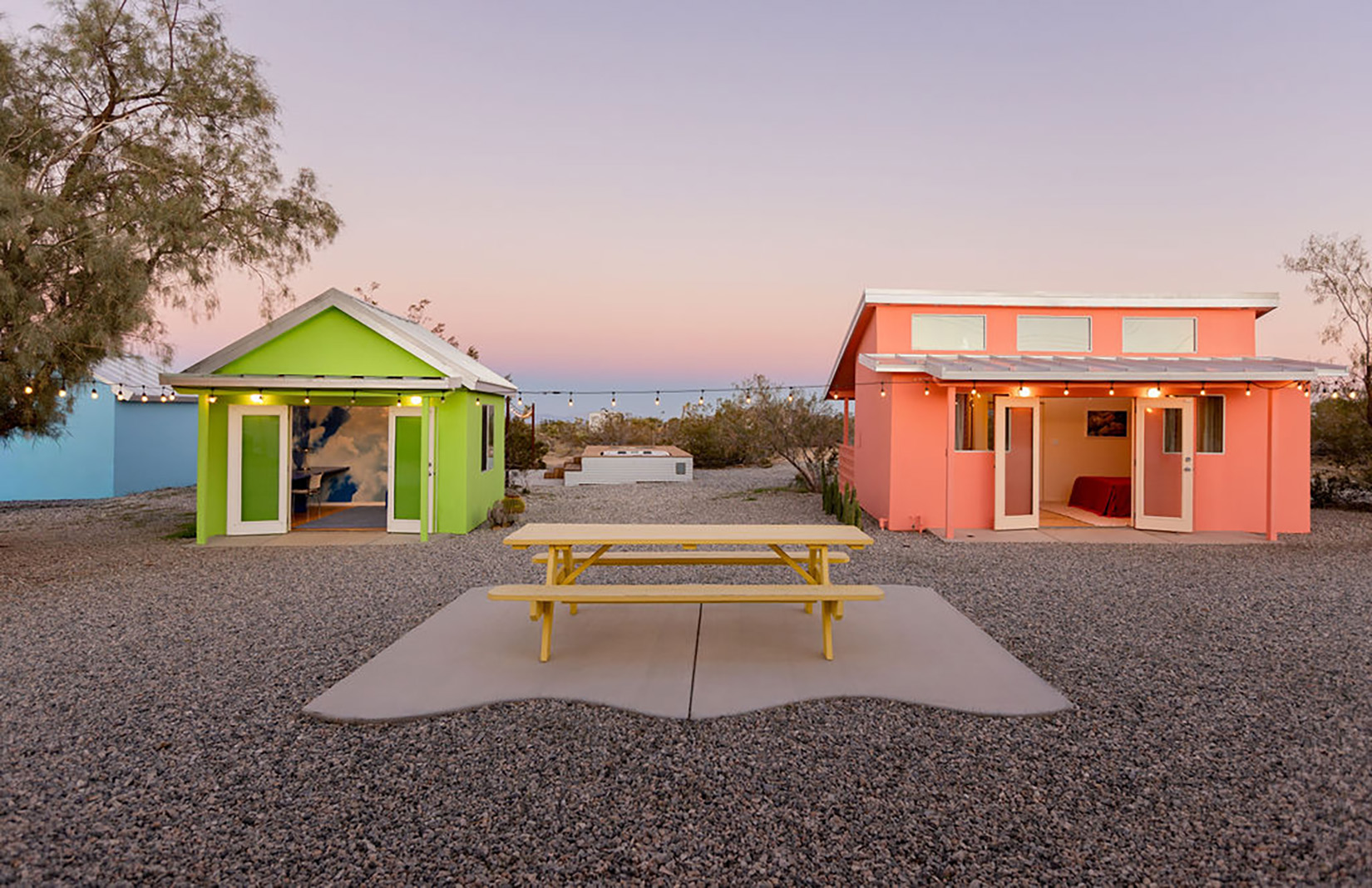Blue Crow’s Modern Venice map marks out the Italian city’s most outstanding examples of modern architecture, released to coincide with the 2o21 edition of the Venice Biennale, which runs until 21 November.
Map creators Marco Mulazzani and Elisa Pegorin reveal a city replete with thoughtful modern creations, from restoration projects and pavilions to sculpture gardens, which contrast and complement its historic fabric and continues its remarkable history.
Here are Venice’s must-see modern buildings.

Giardino delle Sculture/Sculpture Garden, Giardino della Biennale, Carlo Scarpa, 1950-1952
This midcentury concrete open-air shelter in Giardino della Biennale was built as part of a sculpture garden designed for the 1952 edition of the Venice Biennale. With its crescent-shaped roof, rectangular pool and three pillars, it showcases Carlo Scarpa’s use of bold, simple geometry.
Photography: Alessandra Chemollo for Blue Crow Media

Fondaco dei Tedeschi / Rem Koolhas, Ippolito Pestellini Laparelli, 2009-16
Wooden escalators peek out behind three storeys of Renaissance arches overlooking the inner courtyard in this historic building, now a luxury shopping mall redesigned by Rem Koolhas. The 1500s former warehouse-cum-palace stands on the banks of Venice’s Grand Canal.
Photography: Alessandra Chemollo for Blue Crow Media

Palazzo Grassi and Teatrino Grassi, Tadao Ando, 2006; 2011-13
It’s all angles and monumental shapes in Palazzo Grassi’s theatre, revitalised by Tadao Ando and funded by French billionaire Francois Pinault. Ando inserted a new, angular volume within the theatre to create a performance space mirrored in the skylights above.
Photography: Alessandra Chemollo for Blue Crow Media

Torre di Porta Nuova / Porta Nuova Tower, MAP studio, 2006, 2009-11
Map Studio’s design has transformed a 19th-century Arsenal of Venice tower into a cultural centre while preserving the volumes and textures in the vaulted brick dockside building. A waxed cor-ten steel-clad staircase, independent of the walls, forms a solid shape that zigzags up to the upper floors.
Photography: Alessandra Chemollo for Blue Crow Media

Ampliamento Cimitero San Michele / San Michele Cemetery, David Chipperfield, 1998-2007
David Chipperfield’s extension of the San Michele island cemetery favours solidity over a regular, linear formation. Blind walls enclose rectangular courtyards lined with burial recesses, which emphasise a sense of enclosure and intimacy.
Photography: Alessandra Chemollo for Blue Crow Media

Negozio Olivetti / Olivetti Store, Carlo Scarpa, 1957-58
Carlo Scarpa designed this store for the Olivetti typewriting manufacturer, transforming the tucked-away site, set in a dark alley into a light, welcoming space, with elegant wood panelling, eye-shaped windows and a floating concrete staircase.
Photography: Alessandra Chemollo for Blue Crow Media

Quartiere residenziale ex Junghans – Edificio “D” / Residential District Junghans – Building “D” (Giudecca), Cino Zucchi, 1997-2003
This mid-1990s “D” residential district, set on a former industrial site, is modelled on the typical Venetian sequence of streets, courtyards, canals, public and private garden. Apartment buildings have irregular window openings with graphic frames and wooden slate-lined enclosed balconies.
Photography: Alessandra Chemollo for Blue Crow Media

Ponte della Constituzion / Constitution Bridge, Santiago Calatrava, 1996, 2001-08
Santiago Calatrava’s bridge brings a neo-futurist sculptural element to Venice’s Grand Canal using steel and glass, but it has garnered some controversy; the architect had to pay a court fine to the city because the bridge is unable to withstand the wear and tear from thousands of tourists using it every day.
Photography: Alessandra Chemollo for Blue Crow Media

Quartiere residenziale IACP / Social Housing IACP, Giudecca, Gino Valle, Giorgio Macola, 1980-86
At the postmodern Giudecca social housing complex, Gino Valle and Giorgio Macola give typically Venetian stylings a modern aesthetic. The 1980s blocks feature no protruding elements thanks to recessed, shuttered windows and doors, while its entrance arches are tall and are without curves.
Photography: Alessandra Chemollo for Blue Crow Media

Fondazione Querini Stampalia / Querini Stampalia Foundation, Carlo Scarpa; Valeriano Pastor; Mario Botta, 1959-63; 1997; 2003-13
Carlo Scarpa’s transformation of the Querini Stampalia Foundation palace features a garden that speaks of Venice’s connection to the water. It has abstract and sculptural elements such as glass mosaic-covered concrete walls, ground-level pools and channels, and Japanese-style planting.
Photography: Alessandra Chemollo for Blue Crow Media
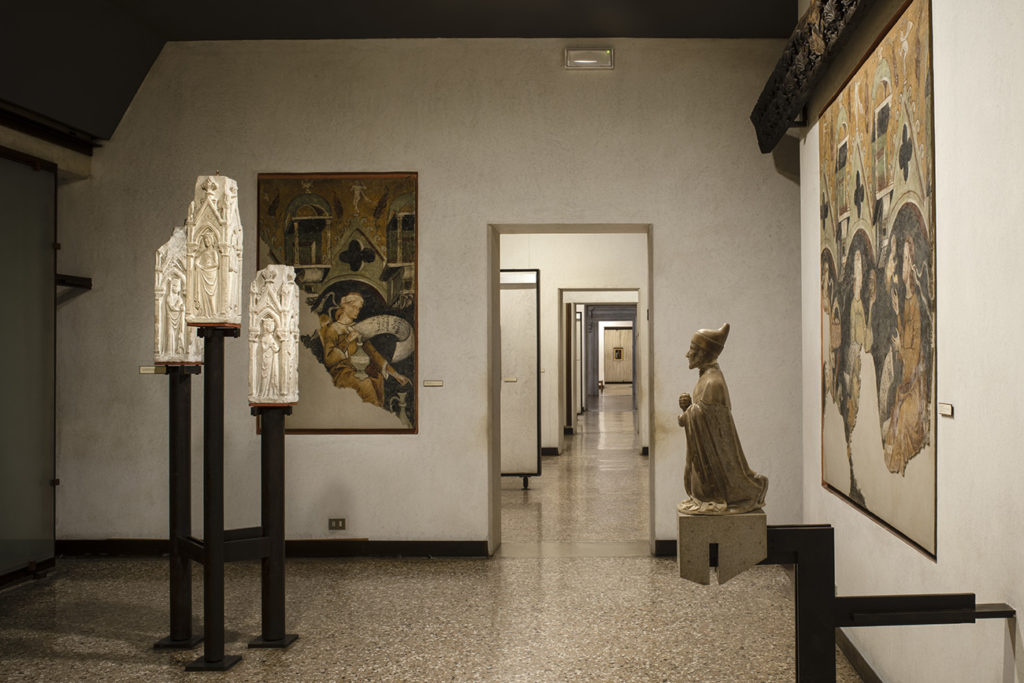
Museo Correr / Correr Museum, Carlo Scarpa; 1957-60
In Carlo Scarpa’s restoration of the Correr art museum, the architect puts paintings and objects on floor stands rather than the walls in a layout designed with an emphasis on design rather than art history.
Photography: Alessandra Chemollo for Blue Crow Media

Casa Cicogna alle Zattere / Cicogna House at Zattere, Ignazio Gardella, 1954-58
Ignazio Gardella’s modern Cicogna House apartment building has a shallow, terracotta tiled roof, an unbalanced symmetrical façade and asymmetric positioning of windows, which takes inspiration from local building tradition.
Photography: Alessandra Chemollo for Blue Crow Media

Image: Blue Crow Media
Modern Venice Map by Blue Crow Media is out now priced at £8.
